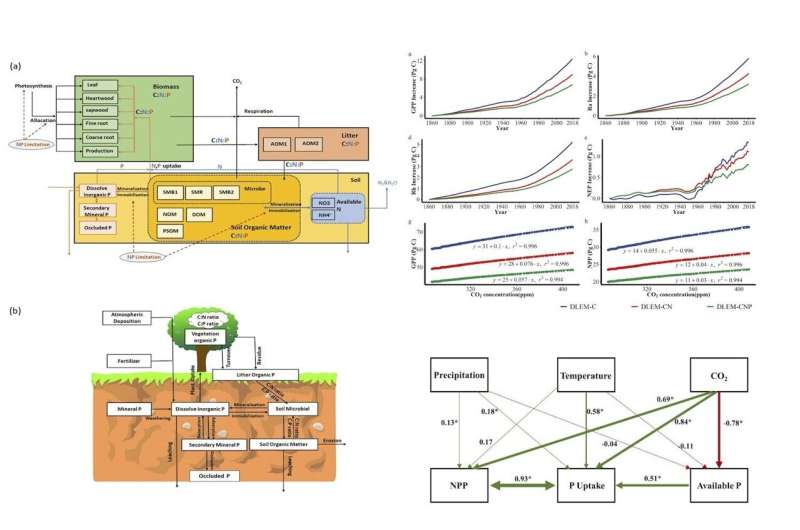This article has been reviewed according to Science X's editorial process and policies. Editors have highlighted the following attributes while ensuring the content's credibility:
fact-checked
proofread
Tropical forests use CO₂ as fertilizer but are limited by phosphorus availability

Tropical forests store approximately 72% of the global forest biomass carbon and contribute about one-third of the global net primary productivity (NPP). The CO2 fertilization effect, which enhances CO2 concentrations in leaves and boosts plants' carbon fixation capacity, has been a key mechanism for maintaining and increasing tropical forest productivity. However, the future of this CO2 fertilization effect is uncertain, partly due to nutrient limitations.
In a study published in the journal Forest Ecosystems, researchers from the United States, Japan, and China present a new carbon-nitrogen-phosphorus coupled biogeochemical model called the Dynamic Land Ecosystem Model (DLEM-CNP). This model examines how phosphorus (P) limitation affects carbon fluxes in tropical forests.
"Tropical forests are vital carbon reservoirs, and their capacity could increase with more CO2, but nutrients are crucial to support this growth," says Zhuonan Wang, the study's lead author and postdoctoral researcher at the Natural Resource Ecology Laboratory, Colorado State University.
"Our model simulates biogeochemical processes in tropical forests and represents the interactive co-limitation of nitrogen and phosphorus on vegetation carbon fixation. It allows us to explore how different factors impact the CO2 fertilization effect in these forests."
The study's multidisciplinary team found that phosphorus limitation reduced the productivity responses of tropical forests to rising atmospheric CO2 concentrations. Combined nitrogen and phosphorus limitations diminished the CO2 fertilization effect on gross primary production, net primary productivity, and net ecosystem production by 45%, 46%, and 41%, respectively.
While CO2 fertilization had a significant positive impact on GPP and NPP, deforestation was the main factor contributing to reductions in these metrics. The factorial experiment revealed that deforestation offset the CO2 fertilization effect on NPP by 135% from the 1860s to the 2010s.
According to Wang, this represents a major advancement in terrestrial biosphere modeling. Wang explains, "Our novel approach highlights how increasing phosphorus limitation and deforestation reduce the carbon sink potential of tropical forests, emphasizing the critical role of phosphorus in the carbon cycle. We hope our results encourage further exploration of carbon-nitrogen-phosphorus models in understanding the global carbon cycle."
More information: Zhuonan Wang et al, Phosphorus limitation on CO2 fertilization effect in tropical forests informed by a coupled biogeochemical model, Forest Ecosystems (2024). DOI: 10.1016/j.fecs.2024.100210
Provided by KeAi Communications Co., Ltd.




















